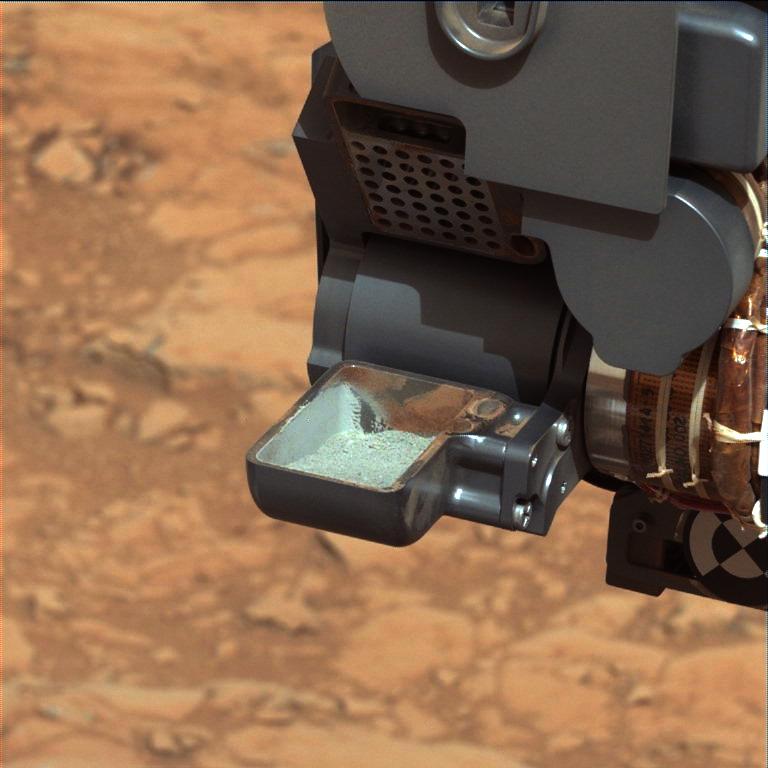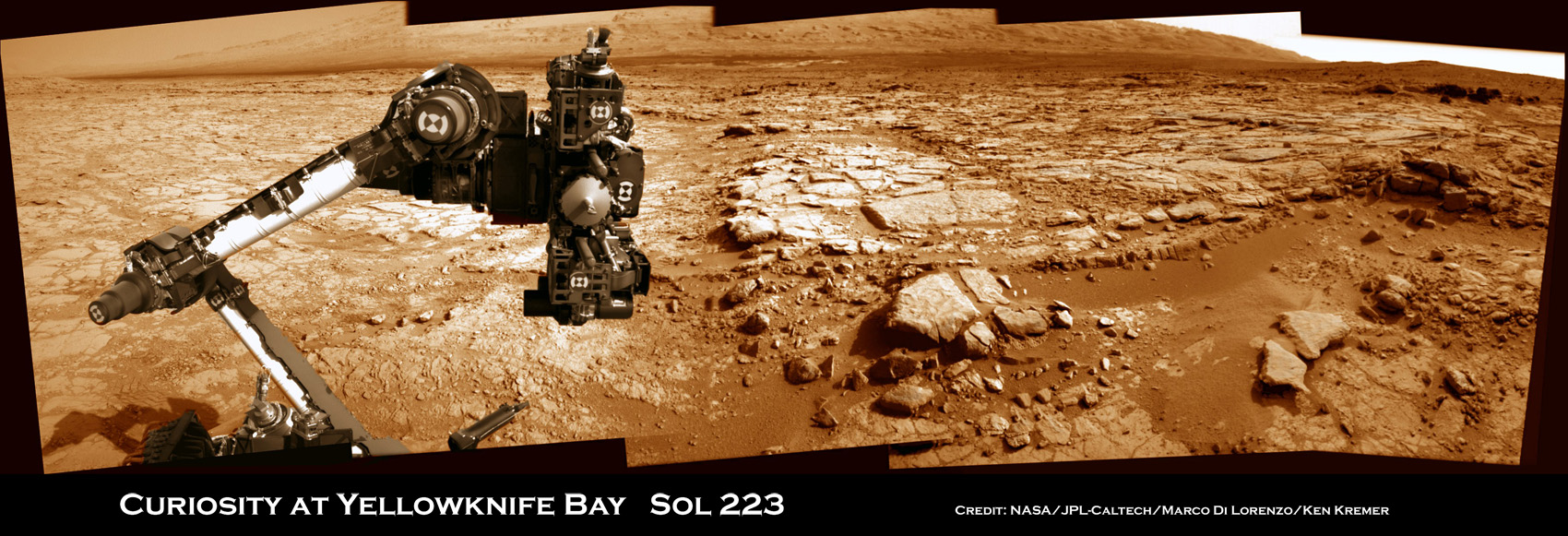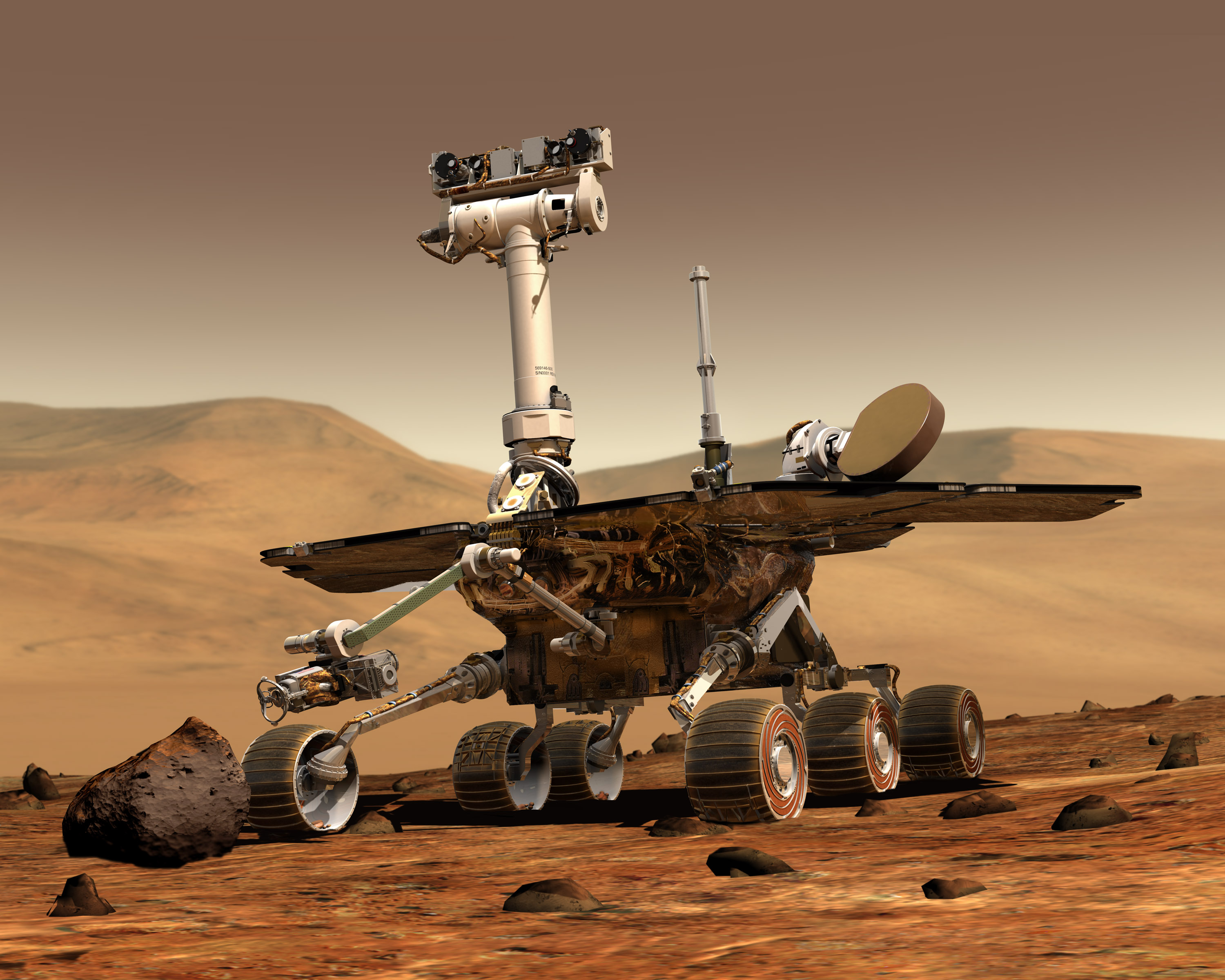-
SCAM WARNING! See how this scam works in Classifieds.
You are using an out of date browser. It may not display this or other websites correctly.
You should upgrade or use an alternative browser.
You should upgrade or use an alternative browser.
Curiosity landing on Mars in less than an hour!
- Thread starter Vicki
- Start date
Vicki
Herbal Alchemist
It's life!!!!  Well, kinda. At least it's organic!!
Well, kinda. At least it's organic!! 
http://www.huffingtonpost.com/2012/12/03/organics-on-mars-curiosity-rover_n_2232436.html?icid=maing-grid7|main5|dl36|sec3_lnk1&pLid=240842
Organics On Mars: Curiosity Rover Finds Evidence Of Organic Compounds On Red Planet

This handout image provided by NASA, taken Sept. 28, 2012, is a mosaic of images taken by the telephoto right-eye camera of the Mast Camera before the rover arrived at Rocknest.
A team of scientists announced on Monday that the Mars Rover Curiosity had found evidence of organic compounds on the Red Planet.
Martian soil samples analyzed aboard the rover revealed "water and sulfur and chlorine-containing substances," the space agency said in press materials.
Scientists will now have to determine whether the compounds are indigenous to Mars. There is a possibility that the organics could have come to Mars from Earth aboard the rover. There is also a chance that they could be materials that had fallen to Mars from space.
SCROLL DOWN FOR LIVE UPDATES
Scientists made the announcement on the first day of the Fall Meeting of the American Geophysical Union in San Francisco, an annual conference that runs through Friday.
Speculation as to the nature of the announcement was rampant in the days leading up to the conference. John Grotzinger, the principal investigator on the Curiosity mission, recently told NPR the data from an analysis of Martian soil "is gonna be one for the history books."
But NASA last week issued a press release calling "rumors and speculation that there are major new findings" from the Curiosity mission "incorrect."
Curiosity, a 1-ton roving science laboratory, arrived on Mars in August. The 354-million-mile journey to the Red Planet took more than eight months.
This is breaking news. Check back for updates.
 Well, kinda. At least it's organic!!
Well, kinda. At least it's organic!! 
http://www.huffingtonpost.com/2012/12/03/organics-on-mars-curiosity-rover_n_2232436.html?icid=maing-grid7|main5|dl36|sec3_lnk1&pLid=240842
Organics On Mars: Curiosity Rover Finds Evidence Of Organic Compounds On Red Planet

This handout image provided by NASA, taken Sept. 28, 2012, is a mosaic of images taken by the telephoto right-eye camera of the Mast Camera before the rover arrived at Rocknest.
A team of scientists announced on Monday that the Mars Rover Curiosity had found evidence of organic compounds on the Red Planet.
Martian soil samples analyzed aboard the rover revealed "water and sulfur and chlorine-containing substances," the space agency said in press materials.
Scientists will now have to determine whether the compounds are indigenous to Mars. There is a possibility that the organics could have come to Mars from Earth aboard the rover. There is also a chance that they could be materials that had fallen to Mars from space.
SCROLL DOWN FOR LIVE UPDATES
Scientists made the announcement on the first day of the Fall Meeting of the American Geophysical Union in San Francisco, an annual conference that runs through Friday.
Speculation as to the nature of the announcement was rampant in the days leading up to the conference. John Grotzinger, the principal investigator on the Curiosity mission, recently told NPR the data from an analysis of Martian soil "is gonna be one for the history books."
But NASA last week issued a press release calling "rumors and speculation that there are major new findings" from the Curiosity mission "incorrect."
Curiosity, a 1-ton roving science laboratory, arrived on Mars in August. The 354-million-mile journey to the Red Planet took more than eight months.
This is breaking news. Check back for updates.
Vicki
Herbal Alchemist
Mars rover Curiosity finds organic compounds, not life
http://www.washingtonpost.com/natio...eef90e-3d6a-11e2-ae43-cf491b837f7b_story.html

By Brian Vastag, Monday, December 3, 3:37 PM
SAN FRANCISCO — The Curiosity Mars rover has discovered something interesting in a scoop of ruddy sand, but NASA scientists say they’re not quite sure what it means.
Sand that was shake-and-baked inside the car-size rover’s chemistry kit bubbled off traces of organic compounds, mission scientists said at a news briefing Monday at the annual meeting of the American Geophysical Union.
Such compounds, made of carbon and chlorine, are of the type that, in some cases, indicate microbes in the soil.
But such compounds also could be contamination from the rover itself — or they may have rained onto the surface inside meteorites, said Paul Mahaffy, a mission scientist from NASA’s Goddard Space Flight Center in Greenbelt.
“It’s unclear if the carbon is Martian or terrestrial,” Mahaffy said.
Further tests will help clarify the source of the chemicals, but mission scientists cautioned that the rover is not equipped to find life itself, only the conditions that may be ripe for life.
If they rule out contamination, the science team will “get into the complex question of whether this is some type of biological material,” said project scientist John Grotzinger. “That’s well down the line for us.”
Jim Bell, president of the Planetary Society, who is not involved in the mission, said searching for life on another planet is difficult. “It’s hard to find [microbial] life here on Earth, which is teeming with it. You’ve got to take samples back to high-tech labs.”
Curiosity’s middle name, Grotzinger said, is patience. “There’s not going to be one single . . . hallelujah moment.”
The minor announcement from the Mars Science Laboratory team comes as a letdown after weeks of speculation that the rover had made an “earthshaking” discovery, as reported by NPR last month.
That radio story, Grotzinger said, sprang from a misunderstanding.
A reporter happened to be sitting with him as the rover’s most sophisticated instrument, called the SAM, beamed back data showing it was working as designed. The science team started “hootin’ and hollerin’,” Grotzinger said.
His lesson: Be careful what you say.
The Curiosity mission was designed to find conditions on Mars conducive to life: water, heat and organic compounds: the building blocks of life on Earth.
Three months after a dramatic touchdown and nearly flawless operations, the mission has ticked off one of those boxes: It landed in a dry riverbed, evidenced by rocks shaped by flowing water.
The rover has also beamed 11,000 pictures back to Earth and taken millions of readings of the planet’s weather and radiation levels. Next up: testing the rover’s drill on a rock.
“We hope to start that before the holidays,” Grotzinger said.
http://www.washingtonpost.com/natio...eef90e-3d6a-11e2-ae43-cf491b837f7b_story.html

By Brian Vastag, Monday, December 3, 3:37 PM
SAN FRANCISCO — The Curiosity Mars rover has discovered something interesting in a scoop of ruddy sand, but NASA scientists say they’re not quite sure what it means.
Sand that was shake-and-baked inside the car-size rover’s chemistry kit bubbled off traces of organic compounds, mission scientists said at a news briefing Monday at the annual meeting of the American Geophysical Union.
Such compounds, made of carbon and chlorine, are of the type that, in some cases, indicate microbes in the soil.
But such compounds also could be contamination from the rover itself — or they may have rained onto the surface inside meteorites, said Paul Mahaffy, a mission scientist from NASA’s Goddard Space Flight Center in Greenbelt.
“It’s unclear if the carbon is Martian or terrestrial,” Mahaffy said.
Further tests will help clarify the source of the chemicals, but mission scientists cautioned that the rover is not equipped to find life itself, only the conditions that may be ripe for life.
If they rule out contamination, the science team will “get into the complex question of whether this is some type of biological material,” said project scientist John Grotzinger. “That’s well down the line for us.”
Jim Bell, president of the Planetary Society, who is not involved in the mission, said searching for life on another planet is difficult. “It’s hard to find [microbial] life here on Earth, which is teeming with it. You’ve got to take samples back to high-tech labs.”
Curiosity’s middle name, Grotzinger said, is patience. “There’s not going to be one single . . . hallelujah moment.”
The minor announcement from the Mars Science Laboratory team comes as a letdown after weeks of speculation that the rover had made an “earthshaking” discovery, as reported by NPR last month.
That radio story, Grotzinger said, sprang from a misunderstanding.
A reporter happened to be sitting with him as the rover’s most sophisticated instrument, called the SAM, beamed back data showing it was working as designed. The science team started “hootin’ and hollerin’,” Grotzinger said.
His lesson: Be careful what you say.
The Curiosity mission was designed to find conditions on Mars conducive to life: water, heat and organic compounds: the building blocks of life on Earth.
Three months after a dramatic touchdown and nearly flawless operations, the mission has ticked off one of those boxes: It landed in a dry riverbed, evidenced by rocks shaped by flowing water.
The rover has also beamed 11,000 pictures back to Earth and taken millions of readings of the planet’s weather and radiation levels. Next up: testing the rover’s drill on a rock.
“We hope to start that before the holidays,” Grotzinger said.
t-dub
Vapor Sloth
Not quite "life" Vicki, but its a step in the right direction  Water is key to Mars' past and its future.
Water is key to Mars' past and its future.
http://www.nasa.gov/mission_pages/msl/news/msl20121203.html
"PASADENA, Calif. - NASA's Mars Curiosity rover has used its full array of instruments to analyze Martian soil for the first time, and found a complex chemistry within the Martian soil. Water and sulfur and chlorine-containing substances, among other ingredients, showed up in samples Curiosity's arm delivered to an analytical laboratory inside the rover."
Scoop Marks in the Sand at 'Rocknest'
This is a view of the third (left) and fourth (right) trenches made by the 1.6-inch-wide (4-centimeter-wide) scoop on NASA's Mars rover Curiosity in October 2012. The image was acquired by the Mars Hand Lens Imager (MAHLI) on Sol 84 (Oct. 31, 2012) and shows some of the details regarding the properties of the "Rocknest" wind drift sand. The upper surface of the drift is covered by coarse sand grains approximately 0.02 to 0.06 inches (0.5 to 1.5 millimeters) in size. These coarse grains are mantled with fine dust, giving the drift surface a light brownish red color. The coarse sand is somewhat cemented to form a thin crust about 0.2 inches (0.5 centimeters) thick. Evidence for the crusting is seen by the presence of angular clods in and around the troughs and in the sharp, jagged indentations and overhangs on one wall of each trench (the walls closest to the top of this figure).
Beneath the crust surface, as revealed in the scoop troughs and the piles of sediment on the right side of each, is finer sand, which is darker brown as compared with the dust on the surface. The left end of each trough wall shows alternating light and dark bands, indicating that the sand inside the drift is not completely uniform. This banding might result from different amounts of infiltrated dust, chemical alteration or deposition of sands of slightly different color.
Image credit: NASA/JPL-Caltech/MSSS

 Water is key to Mars' past and its future.
Water is key to Mars' past and its future.http://www.nasa.gov/mission_pages/msl/news/msl20121203.html
"PASADENA, Calif. - NASA's Mars Curiosity rover has used its full array of instruments to analyze Martian soil for the first time, and found a complex chemistry within the Martian soil. Water and sulfur and chlorine-containing substances, among other ingredients, showed up in samples Curiosity's arm delivered to an analytical laboratory inside the rover."
Scoop Marks in the Sand at 'Rocknest'
This is a view of the third (left) and fourth (right) trenches made by the 1.6-inch-wide (4-centimeter-wide) scoop on NASA's Mars rover Curiosity in October 2012. The image was acquired by the Mars Hand Lens Imager (MAHLI) on Sol 84 (Oct. 31, 2012) and shows some of the details regarding the properties of the "Rocknest" wind drift sand. The upper surface of the drift is covered by coarse sand grains approximately 0.02 to 0.06 inches (0.5 to 1.5 millimeters) in size. These coarse grains are mantled with fine dust, giving the drift surface a light brownish red color. The coarse sand is somewhat cemented to form a thin crust about 0.2 inches (0.5 centimeters) thick. Evidence for the crusting is seen by the presence of angular clods in and around the troughs and in the sharp, jagged indentations and overhangs on one wall of each trench (the walls closest to the top of this figure).
Beneath the crust surface, as revealed in the scoop troughs and the piles of sediment on the right side of each, is finer sand, which is darker brown as compared with the dust on the surface. The left end of each trough wall shows alternating light and dark bands, indicating that the sand inside the drift is not completely uniform. This banding might result from different amounts of infiltrated dust, chemical alteration or deposition of sands of slightly different color.
Image credit: NASA/JPL-Caltech/MSSS

Vicki
Herbal Alchemist
Not quite "life" Vicki, but its a step in the right direction
That's why I said "well, kinda. It's organic."

It's weird that I had that dream that they did find life.








